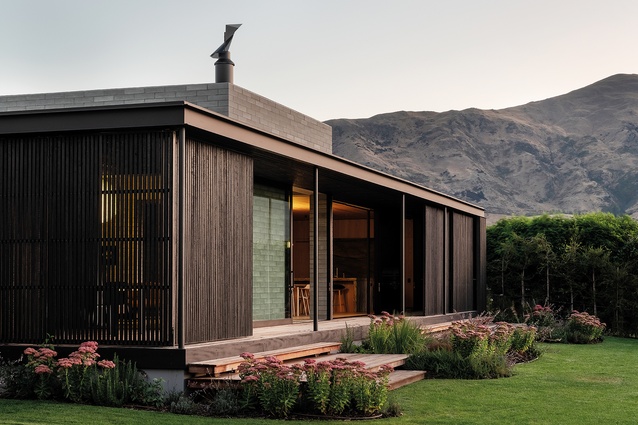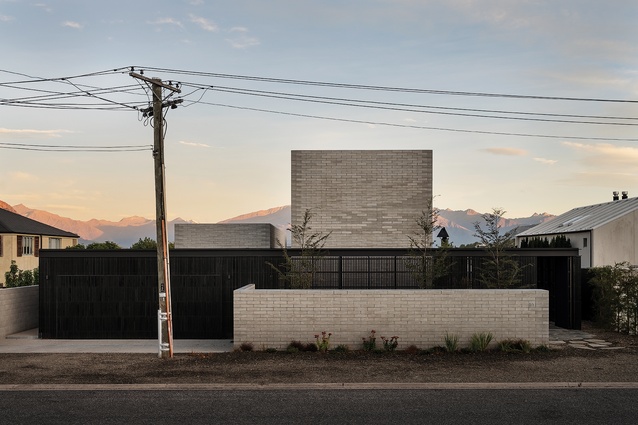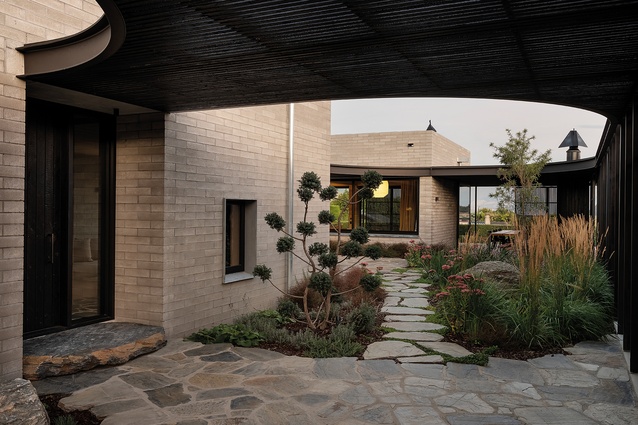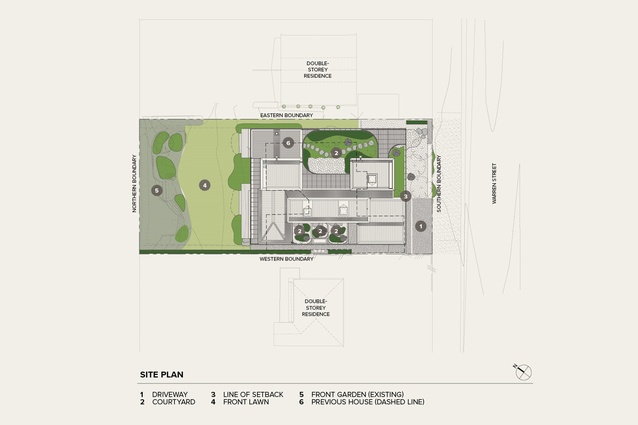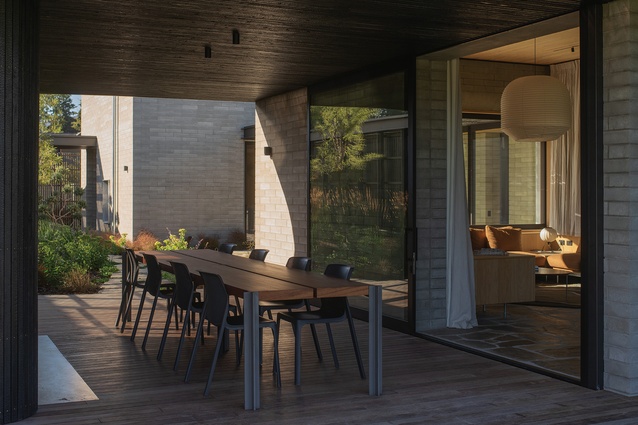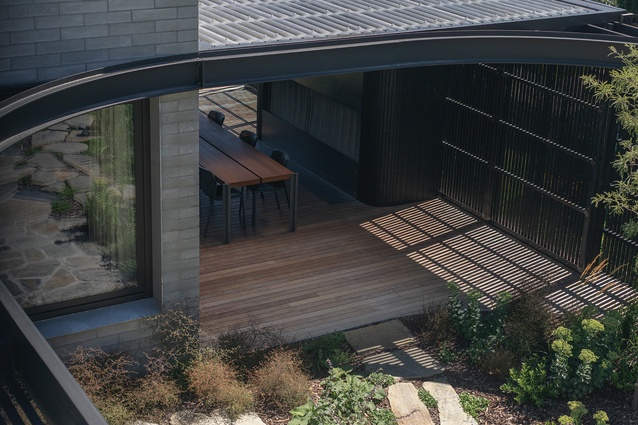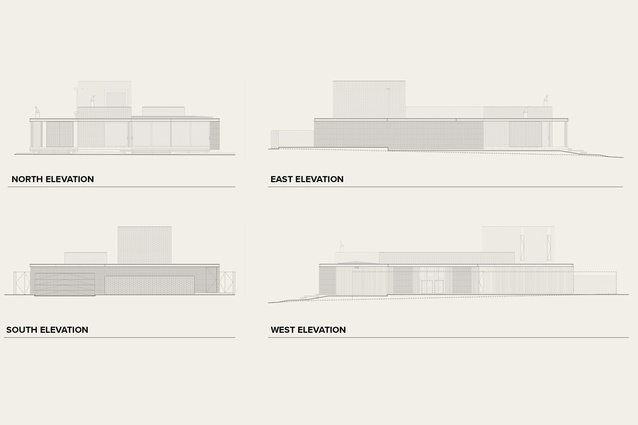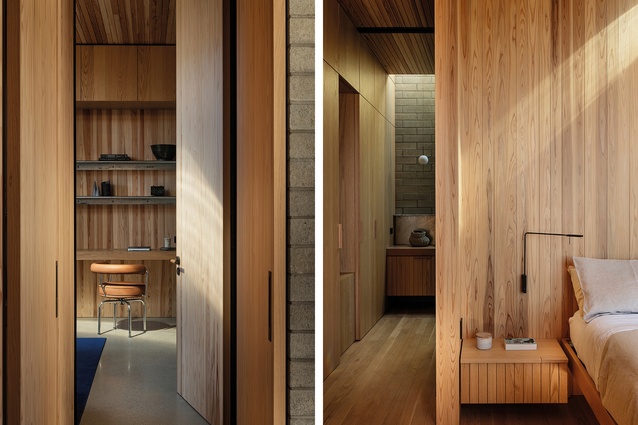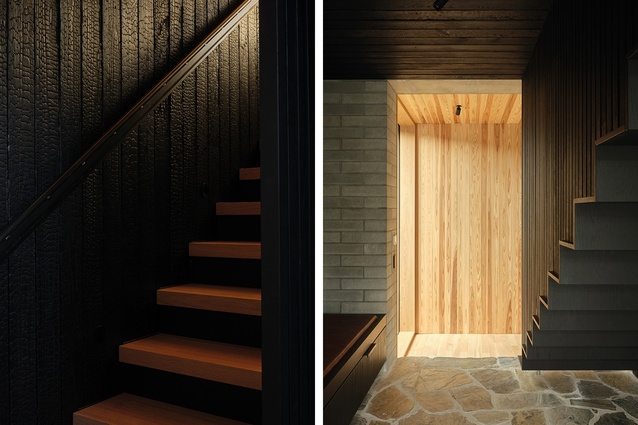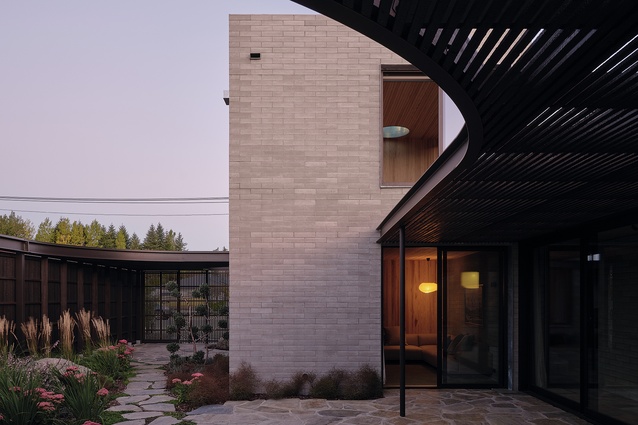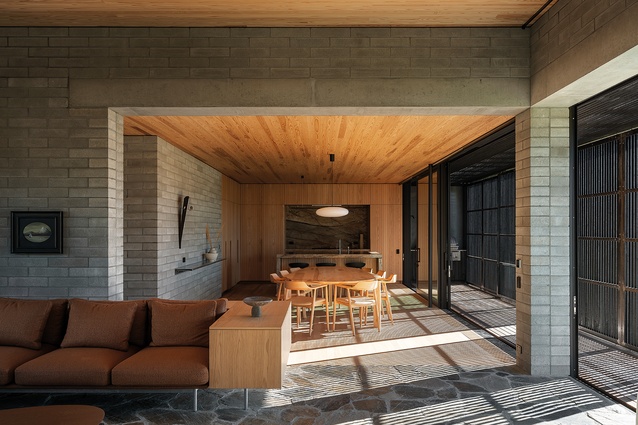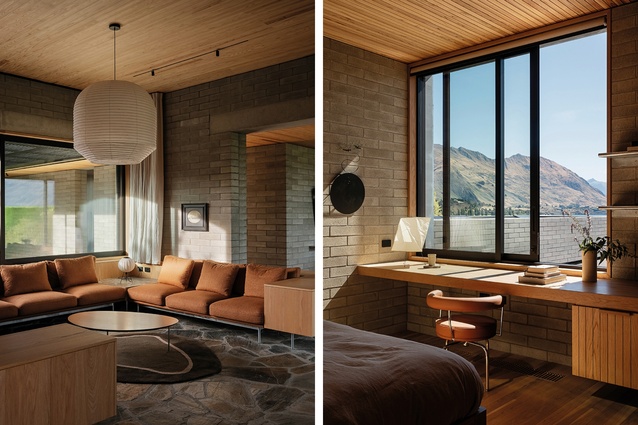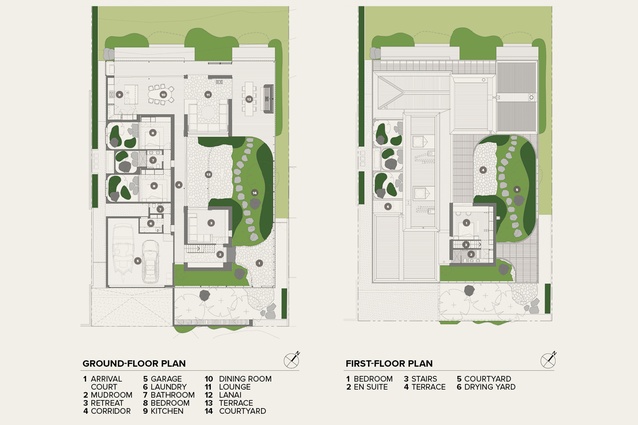In between worlds
John Walsh explores the thresholds that mediate the formidable aspect and family dynamics of S.K.I. House in Wānaka by Roberts Gray Architects.
Greater love hath no architect’s parents than to commission a house from their child. Parental patronage produced some of the 20th century’s most admired houses. The Swiss family Jeanneret funded, and adapted their lives to, son Charles-Édouard’s 1923 exercise in Existenzminimum, the Villa Le Lac on Lake Geneva, having a decade earlier procured from young Corb the Maison Blanche at La Chaux-de-Fonds. A generation later, on Sydney’s leafy North Shore, Rose Seidler commissioned her son Harry to design the house named for her and now enshrined as a modernist masterpiece. In 1960s’ Philadelphia, only-child Robert Venturi designed a house for his mother that realised many of the postmodernist ideas he was currently exploring and would soon publish in Complexity and Contradiction in Architecture.
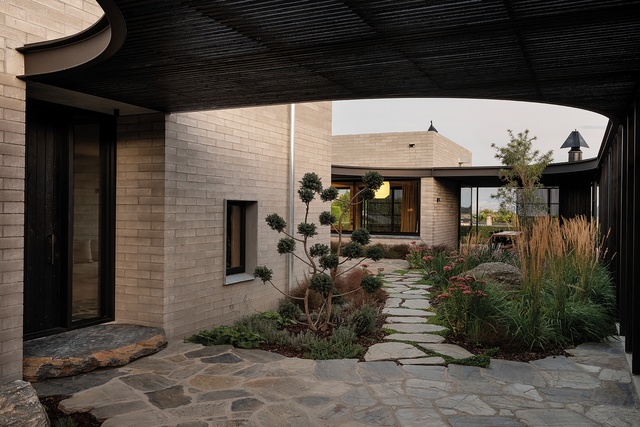
New Zealand architecture, too, has always had plenty of loving parents. Eighteen-year-old William Gray Young got his precocious start to a long career when he designed a home for his parents in turn-of-the-century Wellington. In Auckland, Lillian Laidlaw (later Chrystall) designed a mid-century house for her parents and thanked them for being “such good guinea pigs”. Around the same time, Peter Beaven, adrift after his war service in the Royal Navy — “the greatest pleasure I’ve had in my life, really” — and subsequent “marvellous time” at Auckland University College’s School of Architecture, got back on course when his father sent him to Banks Peninsula to convert a hen house into the family holiday home. In the 1990s, Miriam White’s house for her parents was built in Takapuna. Ten years later, Gerrad Hall went halves with his mother on a pair of Herne Bay townhouses. There are, probably, scores of other local examples of the parental commission.
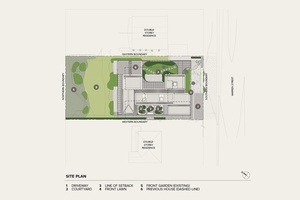
The houses architects design for their parents have a few things in common. One is that they are, necessarily, early-career works. They occur in that sweet spot where a sufficiency of professional experience intersects with the availability of discretionary income. Another commonality is that the house-for-parents is, if not a manifesto, at least a demonstration model. As Lillian Laidlaw suggested, such a commission offers the young architect the gift of tolerance. Another characteristic of houses architects design for their parents, as distinct from houses they might design for themselves: they tend to get finished. Filial piety and the insistence of life’s ticking clock are strong spurs. And, of course, what really helps is a budget that is realistic, at the least, and a little elastic, if push comes to shove.
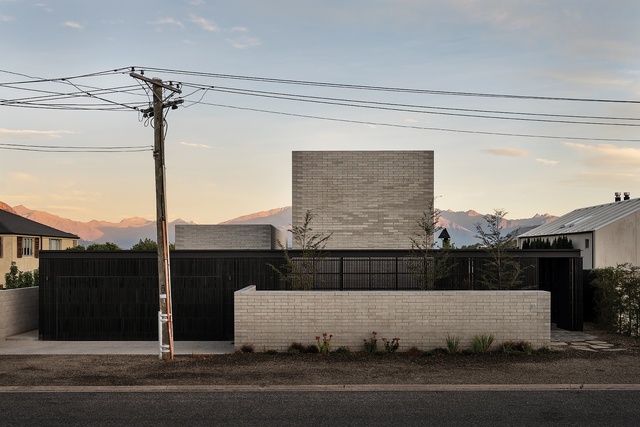
Jimmy Gray’s title for the Wānaka house, which his practice, Roberts Gray Architects, designed for his parents, is a play on the dynamics of the parental commission. S.K.I. House is an appropriate descriptor for a holiday home in an alpine resort. It also works as an acronym: ‘spending the kids’ inheritance’ being the phrase initialised. From the next generation’s perspective, though, all is hardly lost. The house, presumably, will stay in the family, as its members have been holidaying in Wānaka for decades. Gray’s parents originally owned the house next door; his mother’s Wānaka memories go back to the days when the town had few facilities apart from a 4-Square. Fast-developing Wānaka is becoming more properly a town, one with three primary schools and a secondary school. Economics consultancy Infometrics calculates that the resident population of Wānaka and its environs is now around 17,000: three times what it was 20 years ago.
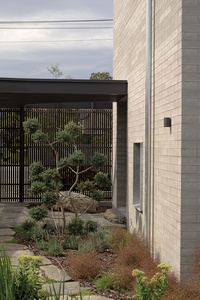
Wānaka’s growth and concomitant suburbanisation, and the uncertainties surrounding local planning regimes, were important factors in the design of the S.K.I. House, which is located several blocks back from the Roys Bay foreshore, at the southern reach of Lake Wānaka. The intention to deal with the street as it is — coherence is not a trait of holiday town architecture — and to protect the house against probable future intensification is obvious on approach. At the property’s southern boundary, the house turns its back to the street, politely but firmly, with a geometric exhibition of rectangular forms made of simple, expressive materials — grey concrete blocks, black timber, black steel. It’s clear the house’s priorities lie in other directions: northwards, towards the sun and views of the lake and Buchanan Peaks, and inwards, to its own world.
The plan is pushed to the west and north of the site to allow room for landscape manoeuvre in the south-east quadrant. Garaging is accommodated in the south-west corner, in front of the guest bedroom wing. This is one of three solid forms, linked by the long north-south corridor that constitutes the house’s spine, around which the house’s more permeable and lightly screened spaces are arranged. The other two ‘static’ or ‘refuge’ zones are the double-height block containing the master bedroom, which is privileged with the house’s only elevated prospect, and the lounge that anchors the free plan of the house’s north.
The S.K.I. House is better understood as a complex rather than as a unitary building. Embodying the clients’ desire to live at ground level (the popped-up main bedroom excepted), the house spreads across its plot, reaching towards the property’s boundaries, making the most of the available space.

In pursuit of this maximalist strategy, Roberts Gray Architects has marshalled an impressive array of outdoor and quasi-outdoor or in-between environments that allow for a flexible response to climatic conditions and habitational preferences. Gray and his family know all about the challenges of Wānaka weather. “The nor-wester drives my dad absolutely nuts,” Gray says. “By midday in summer, you have to get out of the wind.” On the east side of the axial corridor, arrival is sequenced as an informal experience. A garden, wild-planted by Jared Lockhart, complements terraces crazy-paved with brown-hued Lindis schist. (This paving is taken through to the lounge block.) The west side is also a courtyard story; each of the bedrooms opens into its little garden, as does the shared bathroom. The house’s north end is more casually organised around the ‘static’ lounge; ‘operable’ spaces flow into one another and out to the rear garden. The north-east corner is treated as a lanai, a feature no doubt familiar to Gray from his eight years in the office of Herbst Architects.
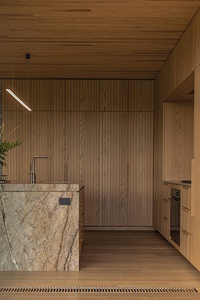
A plan that so distributes space over a site could easily succumb to entropy. Roberts Gray has deployed several countermeasures: an essentially rectangular plan; the trio of concrete-block anchoring forms; the steel framing that edges courtyard areas like a kind of architrave, the angles of its vertices sympathetically rounded, tying together timber screens and thick concrete walls; and the disciplined selection of harmonious materials. The house is textually rich: materials include the concrete blocks, evocative of the modernist tradition of the lower South Island and used in the 390mm-thick insulated walls; galvanised and blackened steel; marble slabs; American oak flooring; and Japanese cedar cladding and screening, charred in yakisugi style. The burnt timber has also been introduced into the interior, a move consistent with the elision, in substantial parts of the house, of inside and out. There is no air-conditioning or mechanical cooling; house- and water-heating is run on a hydronic system, and the house has solar panels.
All in all, the S.K.I House is a significant milestone in the progress of an emerging young practice, an impressive return, you could say, on a special kind of investment. The architects’ professional peers evidently concur: the house is one of only three to have received a 2024 New Zealand Architecture Award.


